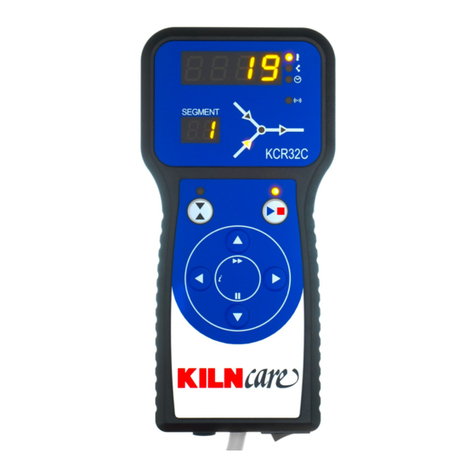
Page Hobbyfuser 3 Manual
10
Element Replacement.
In the event of an element failure replacement is easy done.
Firstly, unplug the kiln from the electrical supply then unscrew the two side
cover boxes that cover the element connections and let them hinge
downwards. It is now possible to replace the elements with the side boxes in
the lowered position and still attached to the kiln lid. If the cover boxes do need
to be removed take extreme care so as to not let the power cables pull at the
element tubes.
When it is determined which element has blown, (for this a circuit tester may be
required). There are three elements in the Hobbyfuser 3, each element
consists of a pair of tubes.
Disconnect both ends of the elements from their porcelain connector blocks.
Now slide out the element and both tubes out as one.
IMPORTANT. For this step it is strongly advised that the room is ventilated and
that a suitable P3 standard respiratory mask is used.
Never handle the element tubes with bare hands, use the disposable gloves
provided. From the left hand side of the kiln slide in the new element.
Take care and be gentle, even though the tubes have a high strength once in
position, they can be chipped or crack if handled carelessly.
Once the element is through both sides of the case then level up the element
and tubes so that the element which is visible through the tube is sitting central
in the roof space with the gap between the element and the fibre wall of the lid
being the same on both sides.
Before connection it is worth checking on the non-connection side of the kiln lid
that the element has stayed fully inserted into the tube, if not then apply gentle
pressure to the element where it links the two tubes together and ease the
element back to its fully inserted position in the tube.
Reconnect the element tails to each porcelain block as before.
Again take care to hold the porcelain connector block steady as you re-connect
to avoid cracking the end of the tube.
Re-fit both side cover boxes ensuring that any wires present are clear of the
protruding element tubes and connector blocks.
A slight odour will be emitted during the first firing as the element burns out
binders in the element seal compound.




























